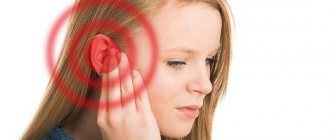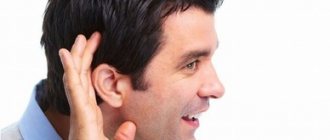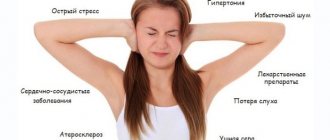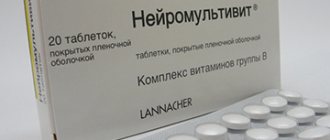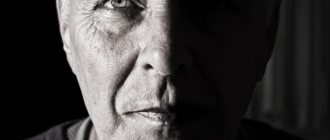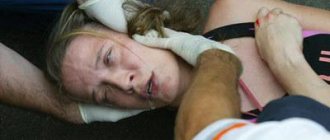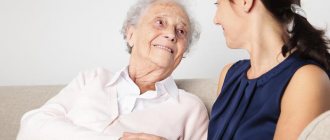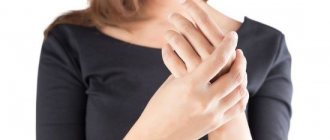Febrile convulsions in children with fever
Febrile convulsions in children appear due to high temperature - during pneumonia, pathologies of the middle ear, bronchial diseases, etc. The temperature of a healthy child should be 36.6 degrees. If the temperature is from 37 to 38 degrees, this indicates a condition called low-grade fever, and above 38 degrees, it is a fever.
Convulsions usually occur when the temperature exceeds 39-40 degrees - this condition is very dangerous for the life and health of the child. Body temperature exceeding 41.5 degrees can lead to damage to the proteins of nerve cells, which can even result in death. In children, convulsions that appear at a temperature of about 38.5 may develop epilepsy in the future.
According to studies, febrile seizures in children occur in approximately 3-4% of cases, more often in boys than in girls.
Risk factors contributing to the occurrence of attacks and relapses are:
- frequent infections in a child;
- the occurrence of febrile seizures among relatives (genetic factors);
- complex nature of the first seizures;
- The first attack of convulsions occurred with a slight increase in temperature.
It should be remembered that many other factors influence an increase in a child’s body temperature, for example, strong emotions or prolonged crying.
Something is gurgling in my ear
As often as not, patients describe a similar symptom to doctors: ringing, shooting, clicking, gurgling in the ear. If all these phenomena occur from time to time and are not accompanied by pain, then the answer to the question - why there is gurgling in the ear - should be sought among the following options.
This may be due to physiological reasons. There are 2 muscles in the middle ear: the stapedius muscle, attached to the stapes, and the tensor muscle, which connects the malleus to the eardrum.
With spasms that occur due to various reasons - during swallowing, physical effort, sharp turning of the head - the muscles involuntarily contract and the bones rub against each other.
There is a feeling that there is gurgling in the ear.
The symptom occurs when swallowing food or liquid. It is not for nothing that in medicine a doctor who deals with diseases of the larynx, ears and nose was called “Ear, nose and throat”. The pharynx and auditory tube are connected by muscles that contract during swallowing and speaking.
When spasms occur in these muscles, very often provoked by nervous conditions, gurgles in the ear when swallowing. Consultation with an otolaryngologist is necessary if this sound appears constantly when swallowing.
When the ear is blocked and gurgles in it during a runny nose, then this phenomenon should not be considered separately. Mucus, which is secreted in excess during rhinitis, passes during breathing near the Eustachian tube itself. If there is a lot of it, the mucous membrane is swollen, then it cannot go away silently.
Symptoms of febrile seizures in children
Febrile seizures are divided into simple and complex. The first type occurs most often in children:
- attacks are short;
- numbness and tension of the whole body appears;
- instant loss of consciousness and contact with the environment;
- excessive salivation or foam at the mouth;
- short-term loss of breathing.
As a rule, simple seizures do not recur a second time during the same illness.
Febrile complex seizures can occur several times during the same infection, and the attack lasts up to 15 minutes. At the same time, not the entire body is attacked, but only, for example, one limb or half of the body. In this case, the child should undergo a more accurate diagnosis, since this disorder may be the pathogenesis of epilepsy.
What to do if your child has febrile seizures
In the event of an attack of febrile seizures, you should not panic. Regardless of whether this type is simple or complex, it is necessary to remain calm. The child should be laid on a flat, soft surface - preferably a carpet or bed. To prevent aspiration, the child's head should be placed on its side and, preferably, lower than the body. During an attack, do not put anything in your mouth, do not give any medications or drinks. You should also not restrain or restrain your baby's torso too much - this can cause the sphincter to relax and therefore cause urinary or fecal incontinence.
If a seizure attack lasts more than 5 minutes, you should call an ambulance.
Attacks may be accompanied by vomiting, so it is important to prevent the child from choking on the contents of the stomach. After the attack stops, the child will be sleepy, he may not understand what is happening to him, so it is necessary to provide him with peace and rest.
If an attack occurs for the first time, you should immediately consult a doctor.
To reduce the risk of recurrence of seizures in the future, if a high temperature occurs, you should immediately lower it - it is necessary to administer antipyretic drugs as soon as possible (best in the form of suppositories); lower body temperature with cold compresses or bathing in cool water (two degrees lower than the child’s body temperature). The child should be dressed lightly, and in case of heavy sweating, it is better to remove clothes. As follows from the studies, febrile seizures do not have any impact on the child’s intellectual or physical health in the future.
Diagnosis of febrile seizures
In the event of complex febrile seizures and the first convulsive episode, it is necessary to conduct a full diagnosis to exclude concomitant diseases that could provoke seizures. It is better to consult a neurologist. No later than 48 hours after the attack, an EEG study should be performed, which is aimed at diagnosing brain functioning.
The study involves placing a special cap with electrodes on the child’s head, through which brain waves are read and recorded. An EEG study is usually performed at night, during sleep. Based on the results of this study, it can be determined whether the seizure was caused only by a high fever, or whether it is the result of another disease. If the occurrence of seizures is not associated with meningitis, and the child’s condition improves after seizures, hospitalization in the hospital is not required.
In the event of complex attacks, it is necessary to carry out medical intervention as soon as possible, as well as do tests:
- general and biochemical blood test;
- analysis to determine the level of electrolytes, glucose, ammonia and other biochemical markers.
Also, sometimes a lumbar puncture (bone marrow sampling) is required for a more in-depth diagnosis. In addition, a CT scan or MRI may be prescribed.
Prevention of febrile seizures
Unfortunately, once a child has had their first attack, the risk of another increases. There is no effective therapy that can eliminate seizures, but they can be prevented to some extent. If a high temperature occurs, care should be taken to immediately lower it. In addition, in order to prevent the development of infectious diseases, which are characterized by high fever, it is necessary to complete all prescribed vaccinations.
A child with risk factors should avoid contact with sick family members. If a child tends to have seizures during a fever, it is necessary to protect him from infections. In infancy, the best protection is breastfeeding. In later life, a healthy and balanced diet that strengthens the immune system is effective.
Precautionary measures
Particular importance is given to preventing water from getting into the ears. When bathing, you must use special ear plugs. They are recommended for use by people who have a history of otitis media.
It is advisable to use such tabs for those who do not suffer from hearing pathology. You should always put rubber pads in your ears to prevent water from entering.
It is necessary to carefully monitor children when bathing; they should wear a rubber cap, it will reduce the likelihood of water getting into the ear canal. Children, unlike adults, may not notice unpleasant sensations in the ears; they cannot always express and describe their condition.
Older children should be taught to tilt their heads to the side after bathing, while jumping.
What are febrile seizures
Cramps are involuntary, paroxysmal muscle contractions that begin suddenly. A seizure attack causes quite strong pain. There are cases where the cramps were so strong that the contracted muscle led to bone fractures. The only effective way to stop a classic cramp is to stretch the contracted muscle (for example, with a cramp in the calf muscle, you should take a vertical position, stand on your heel and pull your toe towards you).
Treatment of night leg cramps with glycerin
Glycerin is a clear liquid that is used as a plasticizing agent in the making of soap and other personal care products. You can buy a bottle of glycerin at any pharmacy.
How to use:
Rub it over the muscles of your legs, just like you would when using a moisturizing lotion. They say that after such procedures, cramps will no longer bother us.
Glycerin is probably the easiest way to eliminate nighttime leg cramps. How effective is it? Let's see!
Symptoms of this condition
Febrile seizures are generalized seizures; in this condition, everything in children twitches: both arms, both legs, head.
Febrile convulsions usually appear against the background of acute respiratory viral infections, otitis media or inflammation of the gastrointestinal tract, occurring with fever. Seizures are divided into three types, each with its own symptoms. But there are also common ones:
- loss of consciousness;
- the child does not react to anything;
- stops crying;
- the body twitches, the head throws back;
- Sometimes it is even possible to stop breathing (then the skin turns blue).
Tension headache: symptoms
The main symptom of tension headaches is intense pressure, causing discomfort, on both sides of the head. In this case, the pain does not have a clear localization and can move from the forehead to the back of the head or temples or in the opposite direction. The first manifestations of pain are often mild or moderate, then a person gets used to them and practically stops noticing them.
Many people do not pay much attention to regular mild headaches or self-medicate. After all, pain is quite tolerable and may not even interfere with everyday life. An attack of pain may last several minutes or last for several days. A characteristic feature of such pain is its persistence and lack of pulsation.
Tension headaches do not cause nausea and vomiting, but they do cause other symptoms. These include: increased sensitivity to loud, sharp sounds, aversion to bright light, irritability, nervousness, weakness, etc.
Causes
Until now, doctors cannot determine the exact causes of febrile seizures in children. What is known is that, against the backdrop of a high fever, the baby may have a febrile attack. This happens due to the fact that in infants and children of kindergarten age the formation of the nervous system has not yet been completed. It is not able to fully control the complex transmission of nerve impulses in the brain.
Diseases that can cause febrile seizures:
- viral and bacterial infections;
- infectious diseases of the upper respiratory tract;
- ear inflammation;
- pneumonia;
- inflammatory processes in the gastrointestinal tract;
- types of herpes.
There are several types of febrile seizures in a child: tonic, atonic, local.
Tonic
They typically experience tension throughout the body. Accompanied by straightening the lower extremities, bending and pressing the upper extremities to the chest. At this moment the head is thrown back and the eyes are rolled back. Then there is a strong twitching of the body, which gradually subsides.
Atonic
Accompanied by complete relaxation of the muscular skeleton, which leads to involuntary emptying of the bladder and intestines.
Local
During such convulsions, excessive tension in the limbs occurs, twitching and rolling of the eyes. Very similar to tonic ones, only convulsions are not throughout the body, but in its individual parts (limbs).
Angiospasm of the retina
The pathology of the ocular vessels is the most significant in ophthalmology today. With vasospasm of the retina, narrowing of the retinal artery or its branches occurs without changes in the vessels. This disease occurs with hypertension, Raynaud's disease, and nicotine poisoning. Due to obstruction of the central artery, blurred vision, black spots and blurred vision may appear. In the initial stage, irritation and frequent blinking are felt. The cause of the disease is watching TV for a long time, poor sleep and insufficient lighting. During examination, the fundus may be normal or narrowing of some or one branch of the artery may be observed. Against the background of atherosclerotic changes, retinal sclerosis is sometimes detected.
To relieve an attack, you need to take vasoconstrictor, sedative or dehydrating drugs. Treatment is carried out jointly by an ophthalmologist, a neurologist and a therapist. If vasospasm is caused by poisoning or eclampsia, urgent hospitalization is necessary.
First aid
The appearance of seizures in children causes panic in parents, especially if the child is an infant. Out of confusion, mom and dad may even fall into a stupor; to prevent this from happening, we will provide some recommendations on what to do when this problem arises.
For babies
Having discovered the first signs of seizures without fever in a child, you should:
- Remove all objects from your baby that could cause harm to themselves. It is best to take him to his crib;
- the surface on which the child lies must be flat;
- lay him on his side so that it is easier for the baby to breathe and he does not choke on vomit or saliva;
- remove tight clothing;
- ventilate the room;
- control breathing;
- Do not leave your baby even one step and note the duration of the attack.
After the attack ends, you must call an ambulance or a doctor at home.
For convulsions accompanied by high fever
The algorithm of action is the same as for spasms in infants. In addition, you should try to cool the child by wiping him with a damp towel in the groin, axillary, elbow and knee areas. When the attack ends, call an ambulance and give antipyretics. Typically, these seizures last from 10 seconds to a minute.
Tension headache: treatment
It is better to select treatment for pathology together with a doctor. It is usually aimed at easing pain and preventing its recurrence. For this, various relaxation methods and medications are used. You can ease or relieve pain with the help of a special massage, and patients are also recommended to undergo a course of acupuncture. A warm, relaxing shower or bath, leisurely walks or bike rides, moderate aerobics, and swimming help to cope with the problem.
Treatment with antidepressants
Antidepressants are widely used today in the treatment of this pathology. Of these, tricyclics, such as amitriptyline, are the most commonly prescribed. The duration of its use is approximately three months. Its effectiveness has been confirmed by experts. However, this remedy also has a number of contraindications and side effects.
New generation antidepressants that act on the serotonergic system can also be used for treatment. Drugs of this type include sertaline, fluoxetine and others. The course of treatment should not be less than three months, and it should not be suddenly interrupted or the self-prescribed dose reduced.
Treatment with folk remedies
Folk remedies to combat the disease include:
- Massage with the addition of lemon oil, carried out on pain points.
- An infusion of thyme, brewed at the rate of 5-10 g of medicinal herb per 400 ml of boiling water, also helps relieve constant pain. Take the product three times a day for a week.
- A leaf of the golden mustache plant, crushed and applied to the temples, will help relieve an attack of pain.
- Beetroot pulp has a similar effect.
- A decoction of herbs such as fireweed, coltsfoot and stinging nettle will help relieve pain. Drink a glass of it daily.
Diagnostics
Usually, if cramps occur against a background of intense heat, their duration is no more than 10 minutes, and they occur extremely rarely, then no special treatment is required. In most cases, the baby outgrows them. But in order to prevent the possibility of developing some serious illness, it is best to undergo a full examination. This is especially important if the nature of the convulsions was slightly different from that described above.
To diagnose the type of seizure, your doctor will prescribe:
- computed tomography;
- general blood and urine analysis;
- lumbar puncture to prevent the development of meningitis and encephalitis;
- electronic encephalogram to exclude epileptic seizures.
Treatment of brain spasms
Cerebral vasospasm is a very serious condition. It must be treated by all possible means in order to avoid a stroke, the consequences of which are long and difficult to overcome. Treatment of cerebral vasospasm begins with an accurate diagnosis. To do this, the doctor will prescribe a collection of general tests, as well as an ultrasound of the brachiocephalic arteries (BCA) using Doppler and a magnetic resonance examination of the cervical spine. The size of the lumens in the vessels and the strength of blood flow are determined using angiography, i.e. X-ray of blood vessels with contrast agent.
Treatment and prevention
A febrile attack does not need to be interrupted. It should go away on its own. We can only ease its course and prevent serious damage from occurring.
If convulsions occur in infants, the following treatment is used:
- 25% glucose solution intravenously at the rate of four milliliters per kilogram of weight;
- vitamin B6 intravenously;
- an injection of a ten percent solution of calcium gluconate, at the rate of two milliliters per kilogram of weight, but not more than 10 milliliters;
- injection of a 50% magnesium solution, at the rate of 0.2 milliliters per kilogram of weight;
- intravenous administration of phenobarbital, at a rate of ten to thirty milligrams per kilogram of weight. Enter slowly;
- intravenous administration of phenytoin, at a rate of twenty milligrams per kilogram of weight.
If convulsions occur against a background of elevated temperature, then it is enough:
- cool the child’s skin by rubbing with alcohol or vinegar;
- you can put cold on your forehead;
- After an attack, give any antipyretic. If the temperature is over 38 degrees, then it is best to give the medicine in liquid form;
- If the attack is prolonged (more than 15 minutes), you may have to give an injection of an anticonvulsant.
Prevention may be necessary only if seizures occur quite often and are long-lasting. It will consist of taking anticonvulsant medications, and only a doctor can prescribe them. In other cases, if you once detect a febrile seizure in a child against the background of a high temperature, then simply try to prevent it from rising to a critical level. Start knocking down early.
Varieties
Depending on the underlying cause, the following types of spasmodic muscle contraction are distinguished:
- tonic spasms – can occur during sleep or from exercise. They are characterized by a gradual and long course;
- clonic seizures - appear due to dysfunction of the cerebral cortex. They are expressed by rapid and short contractions of one or more muscles;
- tonic-clonic spasms - containing manifestations of the two above types. First, a tonic convulsion occurs, followed by clonic convulsions;
- myoclonic spasm - spasms resemble a slight muscle twitch, like a tic, occur without pain and go away on their own after a short amount of time;
- febrile convulsions - occur in newborn babies and children under six years of age against the background of high body temperature (over 38 degrees). Such seizures should be distinguished from childhood epilepsy, which occurs without fever. Treatment for such contractions depends on their duration. In mild cases, it will be enough to use means to reduce fever, and in complicated cases - special anticonvulsants;
- partial spasms – can last up to several minutes. Affects the upper and lower extremities, trunk and head. Quite often occur with epilepsy;
- atonic contractions - sudden drop of the head or lower jaw (muscle weakness). Often expressed in children;
- alcoholic cramps - often appear some time after drinking a large amount of alcohol-containing drinks. Most often occur between 7 and 48 hours;
- medicinal abbreviations – overdose of narcotic drugs.
According to the degree of prevalence, muscle contractions are:
- localized - occurring in a specific area of the body, for example, the face, upper or lower limbs. In this case, one or more muscles are involved;
- generalized - characterized by the seizure of all muscles at once, often causing the victim to lose consciousness.
Possible consequences
Most often, children's bodies outgrow febrile seizures. If they did not appear at high temperatures before six years, they certainly will not appear again. Their course is not accompanied by any consequences, except for short-term weakness after the attack, but it goes away on its own. Injuries caused by incorrect or untimely first aid are possible.
Often parents whose children have had febrile seizures worry about whether this will cause the development of epilepsy. The occurrence of this disease, against the background of the above, is a very rare occurrence. In fact, the development of epilepsy can be triggered by:
- the child's predisposition to epilepsy, i.e. if one of the parents had this disease;
- the presence of neurological problems that were diagnosed before the onset of the first attack;
- deviation in psychological development;
- spasms are local in nature and last more than 15 minutes;
- repetition of spasms within a day or two and without fever;
- night convulsions, sleepwalking.
We hope we have made it clear to you that febrile seizures in children are not such a terrible phenomenon, although they can be frightening for an inexperienced parent. But the main thing is to pull yourself together, do everything without panic and consistently. And if something does not correspond to the given symptoms, consult a doctor immediately.
What to do to prevent this from happening again
After the body has recovered, do not forget that unpleasant symptoms may occur again. Incorrect posture during work, a sedentary lifestyle, improper nutrition, various diseases and disorders weaken muscle tissue. As a result, muscle spasms become more frequent.
Simple exercises will help prevent this:
- strengthening the muscles located on the inner thigh (half-squatting with alternating legs);
- strengthening the quadriceps muscle (lunges forward followed by shifting the center of gravity);
- strengthening the calf muscles (small lunges with the foot placed 20cm from the floor).
Compliance with an active regimen, preventive examinations, regular treatment of existing diseases is half the success of good health and functioning of all body systems. And then the hodgepodge of muscle spasms, cramps and headaches will become a rare occurrence for you.
Tension headaches are typically described as pressing, squeezing, bilateral, dull, and monotonous. Its intensity can vary from mild, barely noticeable, to strong. In the latter case, a person often becomes irritable, nervous, his appetite is disturbed and sleep is lost. In addition, such a person experiences weakness and increased fatigue, as well as an increased painful reaction to bright light, loud sounds and other similar irritants. This disease can occur in any person, regardless of age and gender, but more often women complain about it.
This type of headache comes in two types: episodic and chronic. Pathology of the first type is characterized by a duration of less than 15-20 days per month, with less than 180 days per year. The pain in such cases is not too strong, of moderate intensity. In the chronic form of the disease, symptoms are observed more than 20 days per month or more than 180 days per year. People suffering from this disease often experience long-term depression and other problems. The pain in this case is usually very intense.
Febrile seizures - why do they occur, why are they dangerous and what can be done?
In adults, febrile convulsions may occur at high temperatures; they are also called partial. In these cases, you need to urgently consult a doctor for help to determine and eliminate the cause of their occurrence. Correct diagnosis and timely treatment help avoid serious complications.
Traditional methods of treatment
It is unlikely that it will be possible to cure angiospasm of cerebral vessels using traditional methods on your own. To alleviate your condition, drink tea made from rosehip, nettle, mint, and currant before seeing a doctor.
In addition to the main treatment and taking pills, traditional methods of therapy can be used. They are quite diverse and everyone can choose exactly what suits them:
- A cold compress prepared with a decoction of plantain, dandelion root and St. John's wort. It helps relieve headaches and vasospasm.
- A decoction of thyme and garlic.
- Rosehip decoction has a tonic effect on blood vessels, lowers blood pressure and relieves spasms. This decoction can replace tea.
- Tincture of common agrimony.
- Decoction of small periwinkle.
- A decoction of viburnum flowers.
- A remedy made from 5 lemons, 5 heads of garlic and 500 g of honey. Diseases of the gastrointestinal tract may be a contraindication to its use.
Why do febrile seizures occur?
Involuntary contraction of muscles, manifested in the form of spasms of varying intensity, is called febrile seizures. They appear suddenly and last a short time (from a couple of seconds to two to three minutes), but after a certain period they repeat again. These convulsions are accompanied by severe pain in the area of excitation, which may not go away for several days.
Febrile seizures at body temperature are also called “febrile”. They occur when the mercury rises above 38°C. Spasms depend on:
- person's age;
- his nervous state;
- brain function
- immunity.
The human brain has complex systems. For example, one of them creates a discharge for bioelectrical activity, and the second can suppress it. In a healthy body, the absorption function is more developed, but when a failure occurs, convulsions occur. Answering the question about what other causes of febrile seizures exist, we can talk about the following factors:
- neuroinfectious diseases (encephalitis, meningitis);
- lack of glucose, calcium and magnesium in the body;
- gestosis during pregnancy;
- severe dehydration;
- severe intoxication;
- infectious and respiratory diseases;
- epilepsy;
- traumatic brain injury;
- diseases of the nervous system;
- heredity;
- pathology in metabolism;
- tumor in the brain;
- very loud sound or bright light.
Treatment for tinnitus
The approach to treating tinnitus depends on the underlying disease:
- If the examination reveals any pathological formation, surgical treatment is possible: removal of tumors, neuromas, sanitizing operations for otitis and labyrinthitis.
- Conservative treatment of ear diseases . Treatment of otitis media, eustachitis, removal of sulfur plugs.
- Arthrosis of the temporomandibular joint requires comprehensive treatment from a dentist or orthopedist.
- Stopping medications that may be causing tinnitus.
- physiotherapeutic interventions, methods of hyperbaric oxygenation, acupuncture, and laser therapy have been proposed for the treatment of tinnitus
- For noise caused by muscle spasms, massage of the neck muscles, masticatory muscles, and stretching exercises for the masticatory muscles (moving the lower jaw forward) have a good effect.
- Regardless of the etiology of the noise, psychotherapy is indicated for all patients. This method is aimed at reducing the patient’s fixation on his feelings and changing his attitude towards him.
- Good results can be obtained by the method of biofeedback - training the patient to control his vegetative reactions.
- The use of medications that can reduce noise or improve its tolerance.
Video: how to help yourself with tinnitus, doctor’s advice
Medicines used for tinnitus
As already mentioned, there is no single medication that specifically suppresses tinnitus. However, there are a number of drugs that significantly reduce the severity of noise if used taking into account the predominance of one or another mechanism.
- Anticonvulsants. They have a good effect on muscle noise (convulsive contractions of the middle ear muscles, the tensor tympani muscle, the levator soft palate muscle). Drugs such as finlepsin, phenytoin, lamotrigine are used. The dosage is selected by an otoneurologist.
- Sedatives. Psychotropic sedatives are prescribed by a psychotherapist to patients whose tinnitus is most likely associated with a disorder of the nervous system, as well as to those patients in whom this symptom has led to secondary neuroses.
- Drugs that improve cerebral blood flow. Prescribed to patients with labyrinthine and central types of noise. Drugs used:
- Betahistine is the most effective drug for vestibulopathies and Meniere's disease.
- Nimodipine.
- Pentoxifylline.
- Cinnarizine.
- Gingko biloba.
- Agents that improve venous outflow - troxevasin, detralex.
- Nootropic and neuroprotective agents - piracetam, trimetazidine, mexidol.
- Zinc preparations. It was noticed that in people with zinc deficiency in the body, the administration of this mineral significantly reduced tinnitus.
- Antihistamines – preferably with psychotropic activity, such as promethazine and hydroxyzine.
- To improve metabolic processes, biostimulants and vitamins are prescribed.
How do febrile seizures occur?
In an adult, cramps at fever occur in all muscles of the body. At the beginning of the attack, the patient begins to experience rhythmic twitching of the body. This process gradually weakens and ends. During a seizure, the following may occur:
- throwing back the head;
- eye rolling;
- uncontrollable discharge of feces or urine;
- holding your breath;
- sharp pain, causing groans and even screams;
- straight legs and bent arms;
- tightly clenched teeth;
- loss of consciousness;
- the skin acquires a bluish tint;
- lack of any reaction to the actions of others.
Febrile seizures or chills?
At a temperature, febrile convulsions in adults can last no longer than fifteen minutes, and recur periodically. A sick person must be given first aid, so a specialist must be called immediately. Before doctors arrive, try to reduce the fever as much as possible with the help of medications and cool compresses with vinegar.
- Hold the patient with force, as this can lead to injury.
- Insert objects into the mouth and stick out the tongue, as foreign bodies may enter the respiratory tract and there is a possibility of damage to the oral cavity.
- Give water or medications so that they do not complicate already poor breathing.
- Cool the patient in a cold bath, because this process can cause cardiac arrest.
Treatment of febrile seizures
Treatment of seizures at fever in adults is carried out in two stages:
- relief of convulsions;
- eliminating the cause that caused the attack.
Drug treatment is carried out after a full examination, diagnosis, prescription of drugs by an experienced neurologist and under his constant supervision. If you start taking medications on your own or those that are not suitable for you, they will not only not help, but will also cause great harm. Doctors for such diseases carry out anticonvulsant therapy, consisting of anticonvulsants:
- Phenobarbital;
- Depakine;
- valproic acid;
- Convulex;
- Phenytoin.
If you have a high fever and febrile convulsions, then to prevent them you need to:
- Follow a daily routine and sleep at least 8 hours a day.
- Ventilate the room frequently.
- Eat nutritiously and properly.
- To drink a lot of water.
- Exercise.
- Treat viral and infectious diseases in a timely manner.
- Avoid high temperatures.
Contraindications
When there is squelching in the ear, there is no need to self-medicate, even something as seemingly harmless as herbal medicine. Some herbs can cause unnecessary reactions in the body and aggravate diseases. You should also not choose drops or medications yourself. You do not know the full clinical picture of the disease. Cleaning your ears by freeing them from water is also not recommended. After all, there may not be water in the ear area, and the eardrum can be easily damaged by cleaning sticks or unskilled rinsing. Do not heat your ear or apply strange compresses to it, all this can harm your ears.

